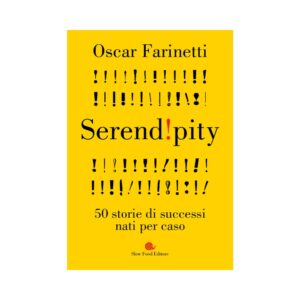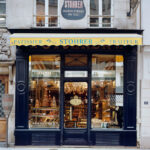
Oscar Farinetti
Born on September24, 1954 at Alba, the small city in Piemonte famous for wine and truffles, Oscar Farinetti is THE maverick entrepreneur of Italian food and cuisine. In January 2007 he founded “EATALY” opening in an abandoned Carpano Vermouth factory in Turin’s Lingotto neighborhood his first marketplace store of top-quality exclusively Italian food and wine plus enogastronomic-related products. A decade later outside Bologna he added to his “empire” the agri-food theme park “FICO”, an acronym for Fabbrica Italiana Contadina or the Italian Farmers’ Production Center. For all its farm-to-the-table activities, hours, various entrance fees, restaurants, and products for sale, check out: www.eatalyworld.it.
According to the company’s website there are 40 some “EATALY” stores around the world, with about half in Italy in Turin, Alba, Bari, Bologna, Chieri, Florence, Forlì, Genova, Piacenza, Pinerolo, Trieste and Rome. In Rome’s store, previously an abandoned air terminal in the Ostiense neighborhood and now “EATALY’s biggest venue in the world at 170,000 square feet, there are some 22,000 different products on sale. Outside Italy, “EATALY” is located in Australia, Brazil, Denmark, Germany, Qatar, Russia, Saudi Arabia, South Korea, Sweden, Turkey, the UAE, and the United States. Its American venues are in Boston, Chicago, Dallas, Hollywood, Los Vegas, and two in Manhattan. In 2019 “EATALY” opened in Paris and Toronto; others in the planning stages will be in Abu Dhabi, Brussels, Hong Kong, Johannesburg, Lausanne, London, Mexico City, Philadelphia, Rio de Janeiro, San Francisco, Singapore, and Washington D.C..
The recipient in 2013 of the “America Award” from the Italy-USA Foundation, Farinetti, who in 2015 resigned as CEO in favor of his son Nicola, is also the author of several books, publishing one almost every year since 2008. They’re about his family, businesses, philosophy of life, wine, and food. Speaking of food, since October 1, 2016, he’s collaborated with “Slow Food”, which is also the publisher of his latest volume entitled “Serend!pity”, published last May during lockdown. 
In the forward Farinetti explains the reason for his choice of title and the volume’s organization: “Serend!pity” is because originally it signified important discoveries which happened by chance when the research was aimed at discovering something else. Over the years it’s evolved to mean happy unexpected events.
“Serend!pity” has fifty short stories about foods or drinks discovered 1) because of a production mistake: Coca Cola or Gorgonzola; 2) of those discovered while trying to fix a mistake: panettone, Russian salad and Guinness, and 3) of food products: pepperoncino and the ice cream cone or dishes like risotto alla Milanese which have unexpected histories. Among the foods he narrates are anchovies from the Cantabrian Sea, Neapolitan cutlet, Kellogg’s cornflakes, brownies, gianduiotti, and grissini; the wines: L’Amarone, Barolo, Chianti’s Black Rooster, Marsala, Champagne, and ice wines; and sauces: Modena’s balsamic vinegar and Worcester.
In 2017 I wrote a similar type story, “Who Invented Cappuccino?. It recounted how this Italian icon was first concocted during the late 1600s in Vienna, not in Italy, either by the Italian monk Marco D’Aviano or by the Polish spy Jerzy Franciszek Kulczycki. In Serend!ty Farinetti recounts the Polish origins of a second Italian gastronomic icon: Babà al rhum. So it’s not Neapolitan, as we’ve always thought. He quotes two different versions told to him by Gennaro Esposito, the jolly owner/chef of the superb restaurant with two Michelin stars, “Torre del Saracino” in Vico Equense on the Amalfi Coast.

Genaro Esposito

Portrait of King Stanislaw I
It seems that Stanislaw I (1677-1766), twice King of Poland, the Grand Duke of Lithuania, Duke of Lorraine and Count of the Holy Roman Empire, who lived in exile in France from 1709 on, was a distinguished scientist and economist as well as an amateur chef and gourmand. He loved babka, then a kind of nougat made with saffron and candied fruit. He loved it so much that when it dried out, he fell into a depression, forced to soak his babka in madeira. Esposito’s second version recounts that Stanislaw, known for his bad temper, was once so depressed that his babka had grown so hard and stale that he threw it across the room hitting and breaking a bottle of madeira that doused it. A third version, not Esposito’s, recounts that Stanislaw was obliged to soak his babka because he had rotted, if any, teeth.
The story continues that, when Maria, Stanislaw’s daughter, married the French King Louis XV, she took with her to Versailles her father’s Polish pastry chef Nicolas Stohrer. Replacing madeira with rum, Stohrer’s recipe became such a success that a generation later, when Archduchess Marie-Caroline of Austria, sister of ill-fated French Queen Marie-Antoinette, married the Bourbon King Ferdinand IV, she brought with her Stohrer’s recipe to Naples.
Thus we know that babà was originally Polish babka ponczowa. Some food historians say that its name derives from Ali Baba, the hero of “Ali Baba and the Forty Thieves”, one of the best known stories in “One Thousand and One Nights” because he was one of Stanislaw’s favorite literary characters. Others say that the name stems from the Slavic word baba meaning “grandmother” or “old woman”.

At Stohrer today

Stohrer
For certain we know that in 1730 Stohrer opened his namesake patisserie. Today the oldest in Paris, it’s still located in the deuxième arrondissment at Rue Motorgueil 51, but that the babà’s mushroom shape and the addition of rum dates in its recipes from 1835. Its first Neapolitan recipe dates to a year later when a pastry chef surnamed Angeletti wrote a cooking manual. His recipe included raisins and saffron.

Babà at Gran Caffè Gambrinus

Babà at Scaturchio
When it possible to travel again, for the most special babà in Paris go to: “Stohrer”; super elegant “Le Train Bleu” in the Gare de Lyon; restaurant and food boutique “Arnaud Nicholas” at 46 Avenue de la Bourdonnais, and “Bistrot Paul Bert”, at number 6 of its namesake street cited by Michelin for its home-cooking; in Naples: reasonably-priced “Antico Forno Attanasio” near the main station at Vico Ferrova 1/2/3/4; also reasonably-priced hence the line at “Pasticceria Bellavia”, at Via Carbonara 39; famous for its chocolate-filling, “Pastisseria Capriccio di Salvatore Capparelli”, Via dei Tribunali 325; historic “Pasticceria Carraturo”, Via Casanova 97; Pasticceria Mignone, Piazza Cavour 145 near the Museum of Archeology; Naples’ most famous pastry shop “Scarturchio”, on Piazza San Domenico, for its “babà Vesuvio”; and super elelgant “Gran Caffè Gambrinus”, the Caffè Greco of Naples. Founded in 1860 near the opera house San Carlo, it was the favorite meeting place of D’Annunzio, Oscar Wilde, Hemingway, Matilde Serao, Princess Sissi, Sartre, de Maupassant, Zola, and Benedetto Croce.

Babà at Carraturo

Babà at Bellavia
